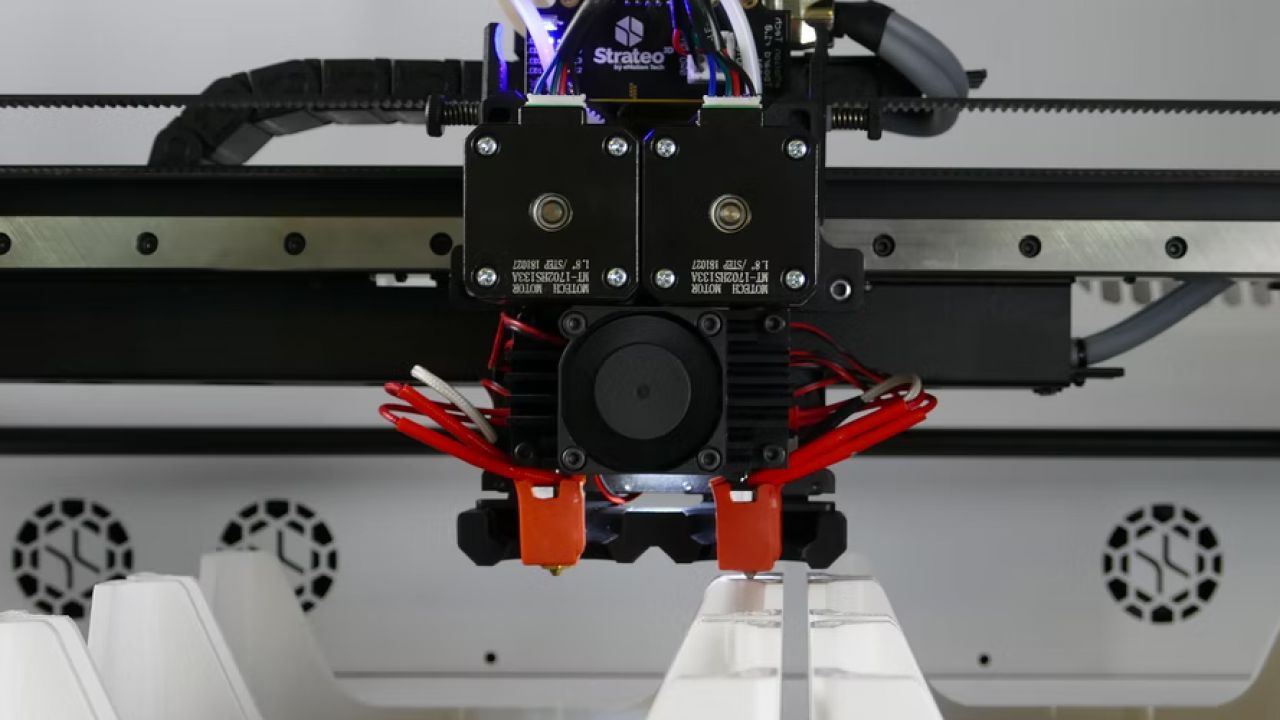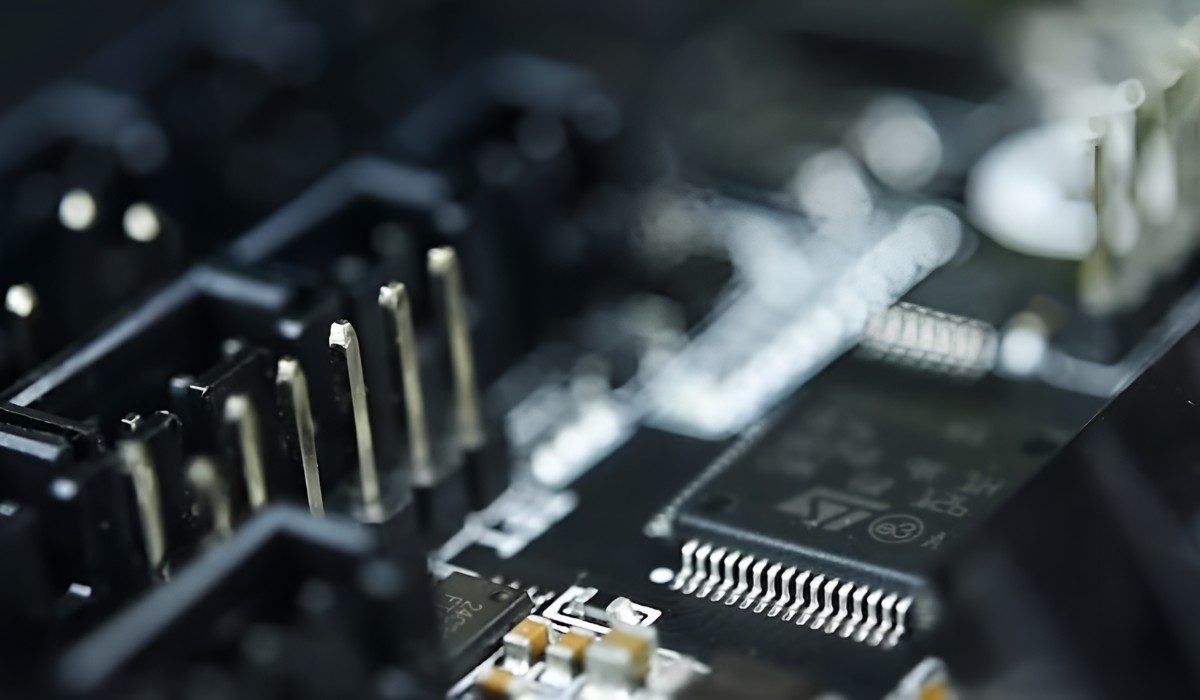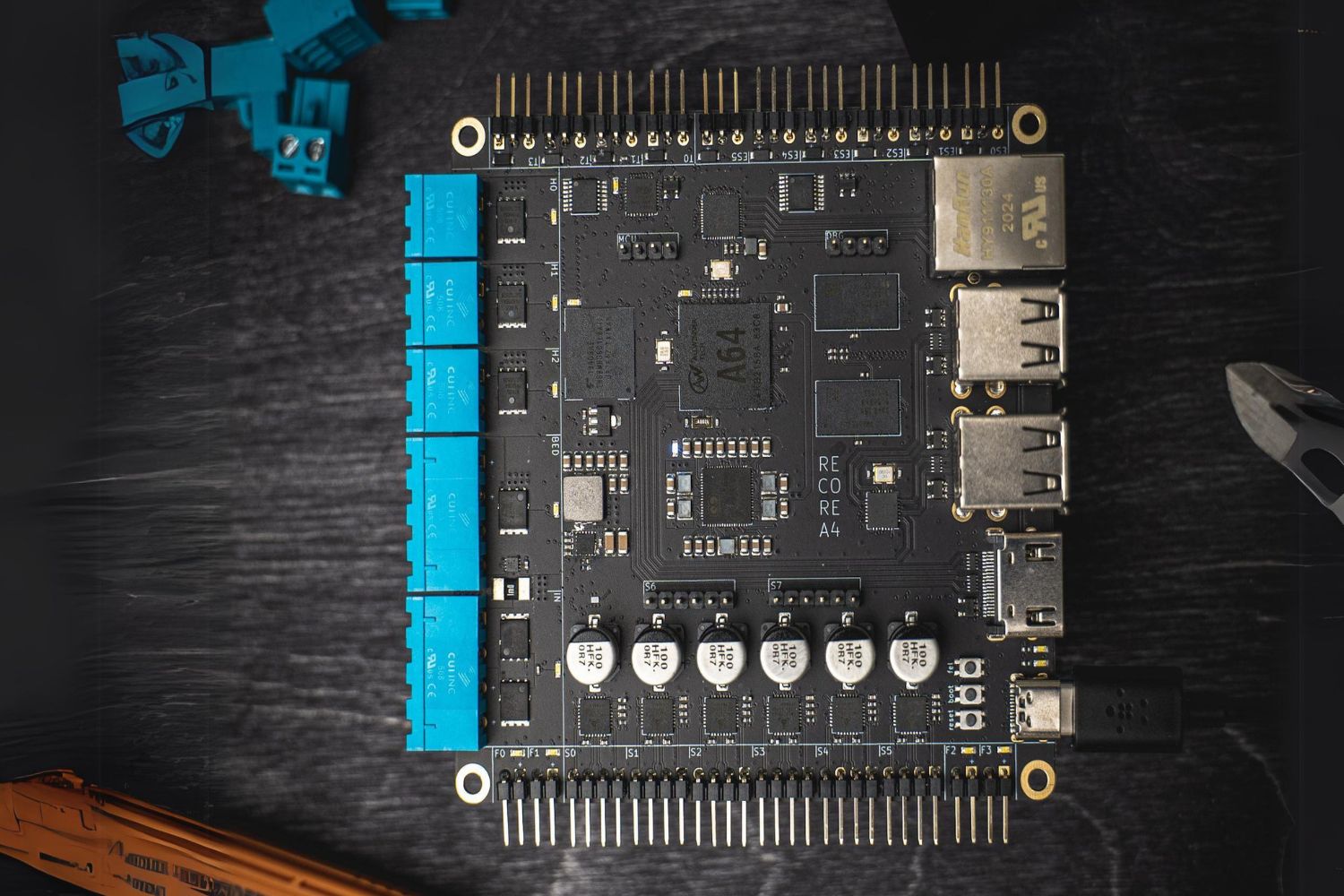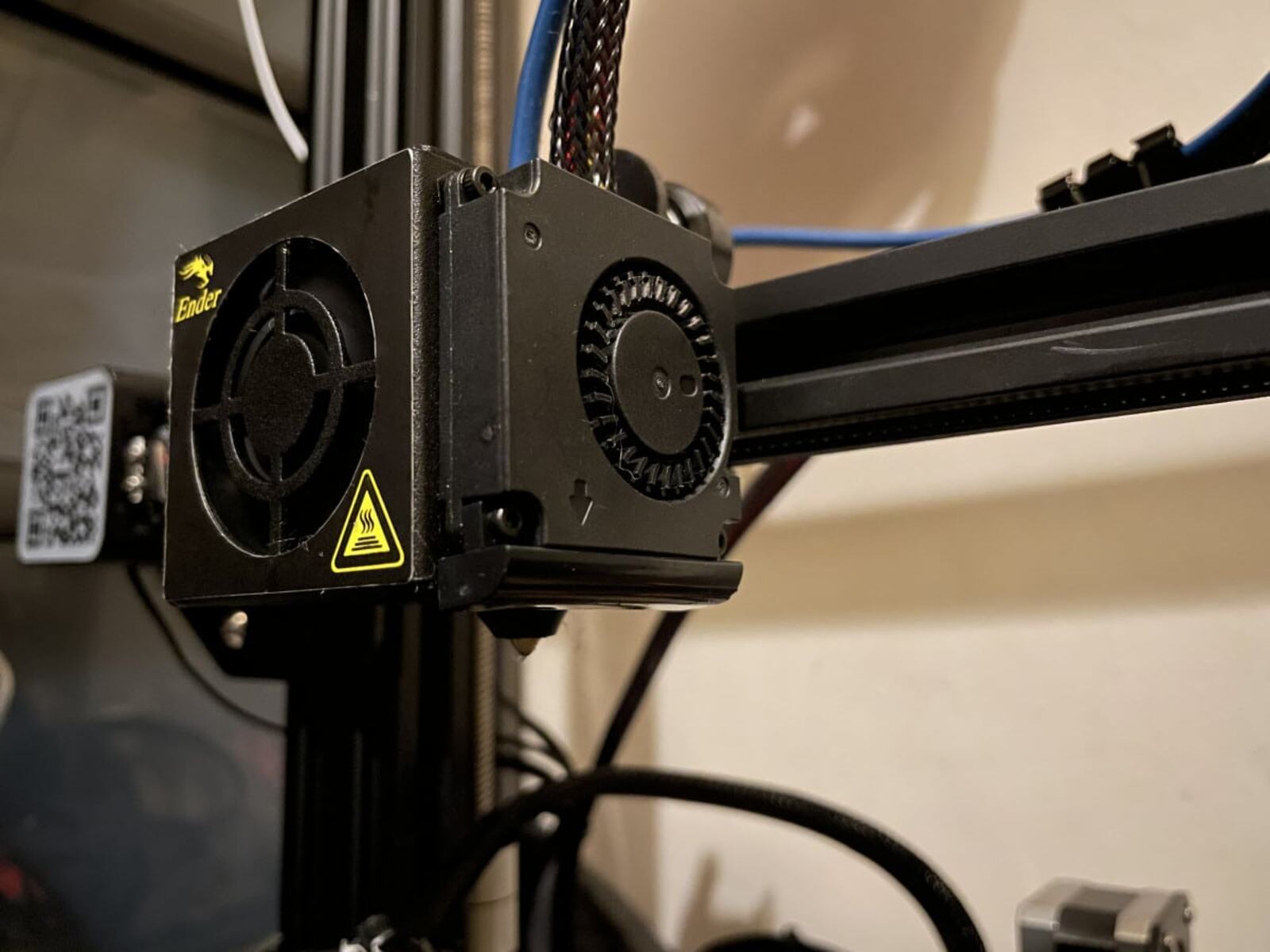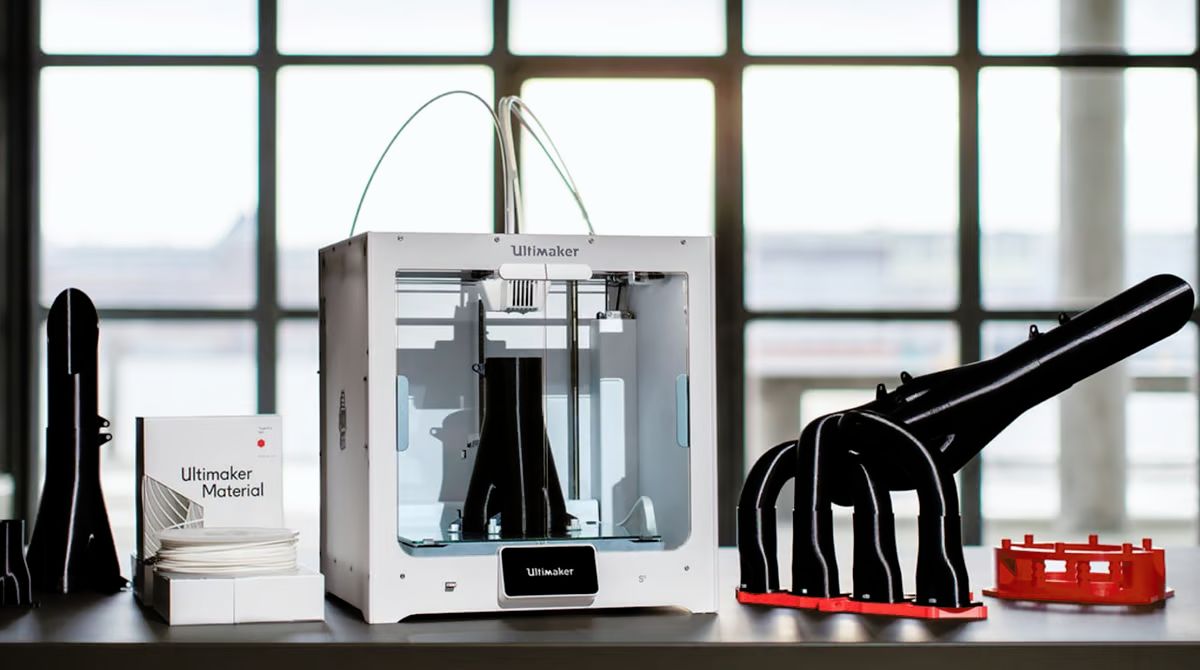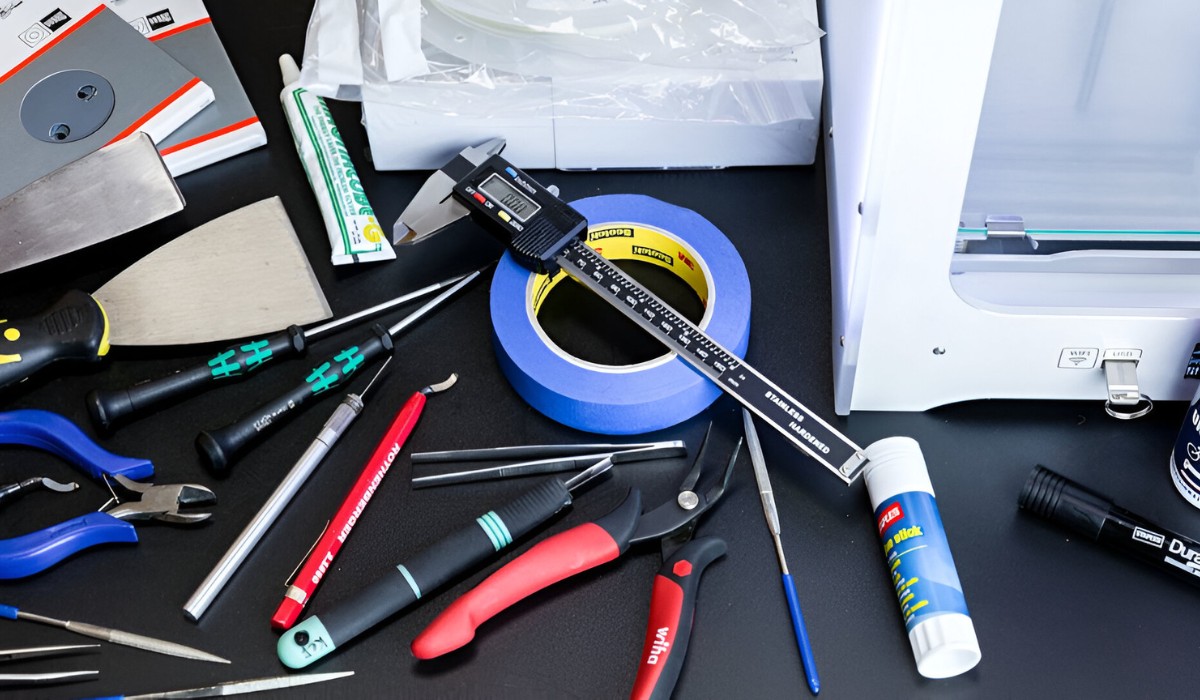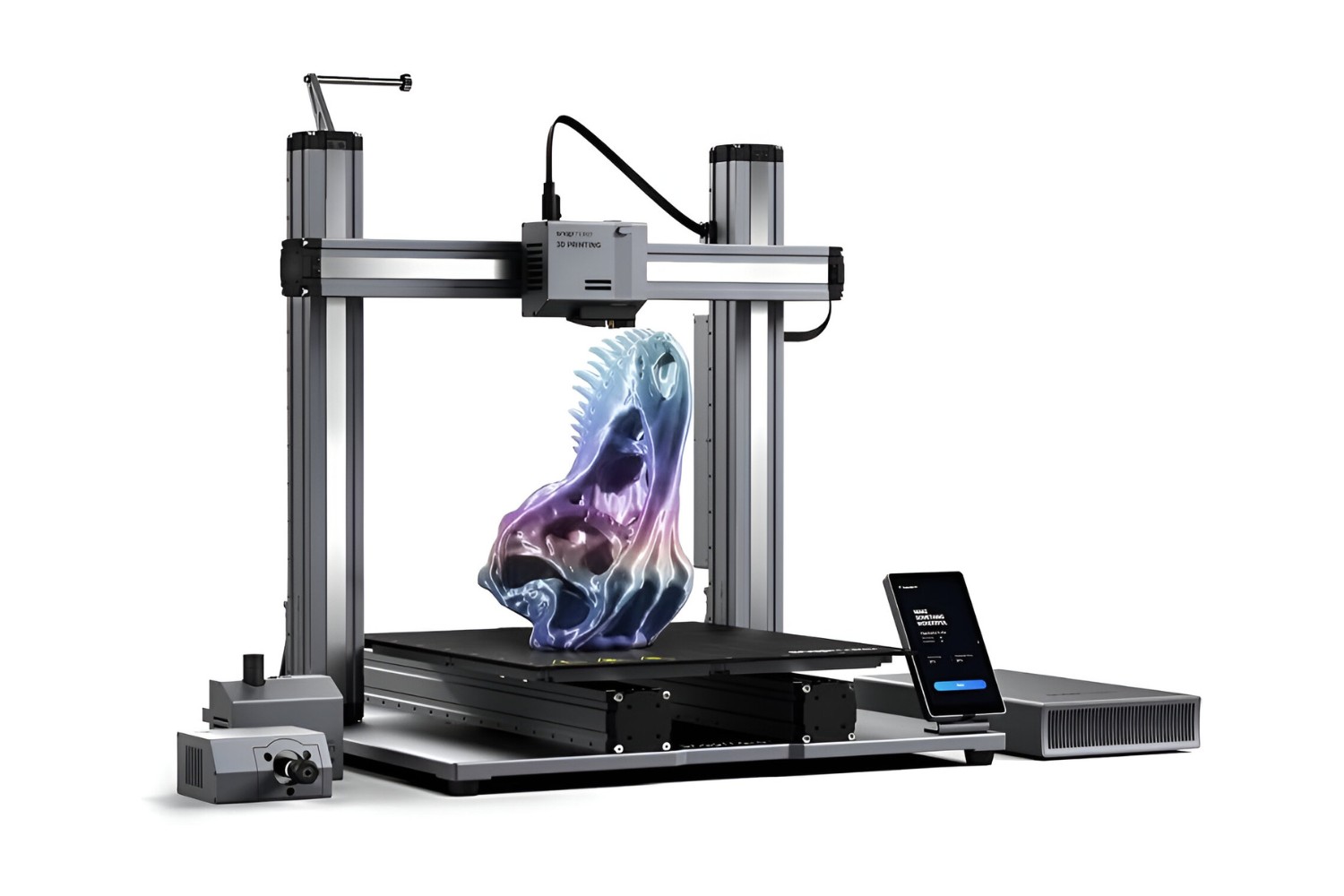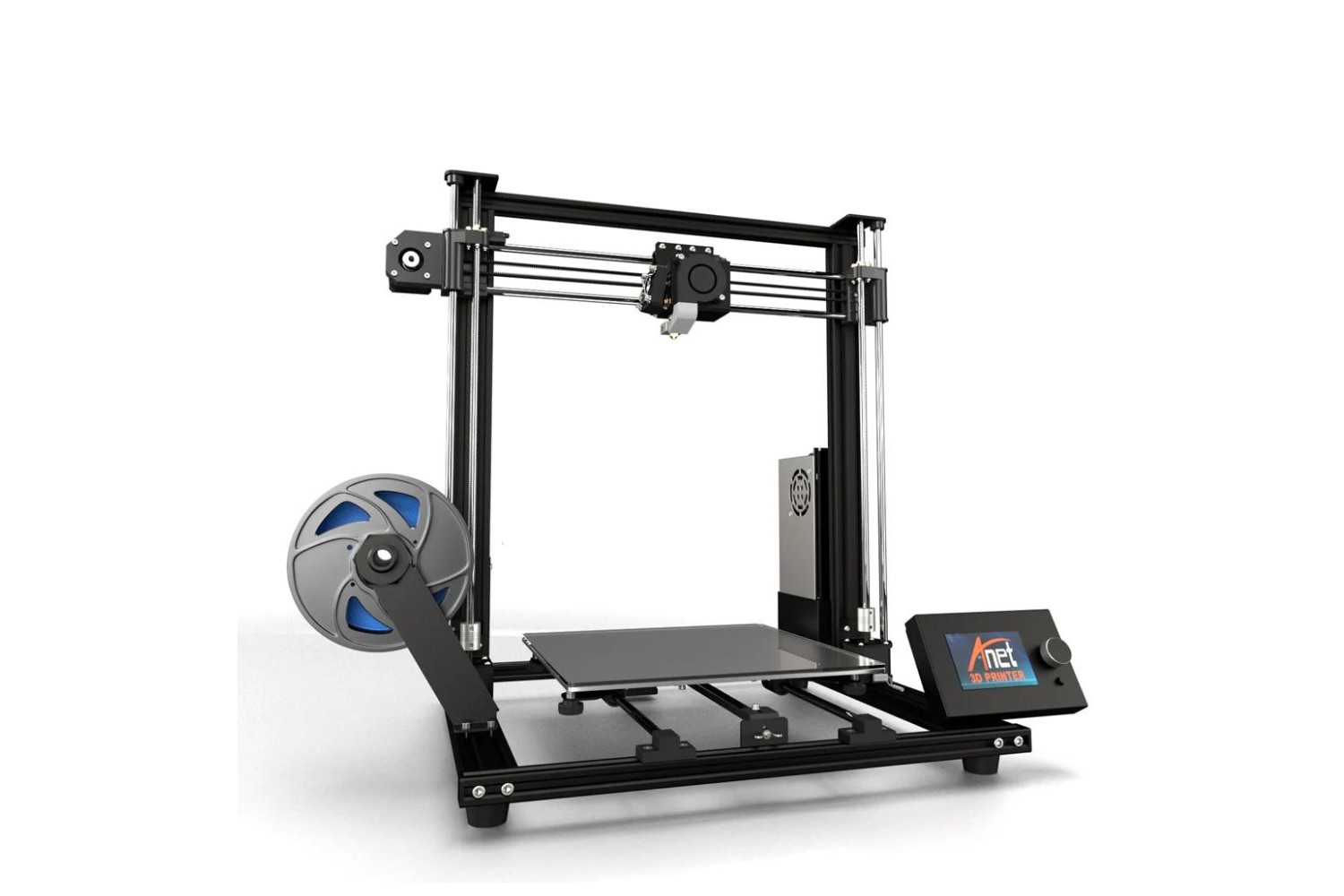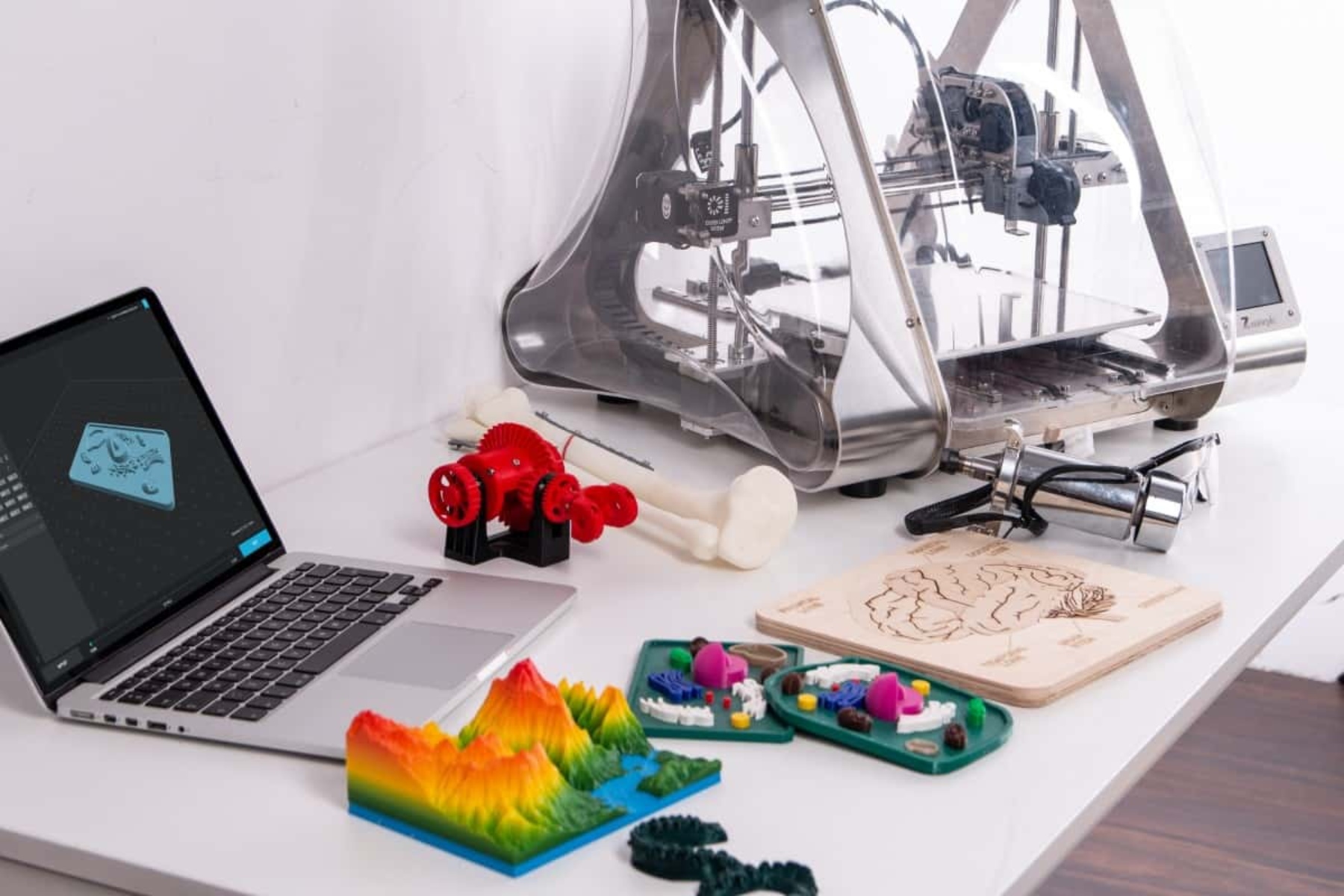Introduction
Welcome to the world of 3D printing, where creativity knows no bounds. With the ability to bring digital designs to life, 3D printers have revolutionized various industries, from manufacturing to healthcare. However, just like any other technological marvel, 3D printers face their own set of challenges that need to be addressed to ensure smooth and safe operation.
One of the most critical issues that can arise while operating a 3D printer is thermal runaway. This phenomenon occurs when the temperature within the printer’s extruder continues to rise uncontrollably, jeopardizing the integrity of the print and posing a significant safety risk. Thermal runaway can lead to clogged nozzles, failed prints, damaged components, and even fires.
Understanding thermal runaway is essential for every 3D printer enthusiast or professional. It allows for proper preparation, prevention, and implementation of safety measures to ensure a seamless printing experience. In this article, we will explore the causes of thermal runaway, its importance in printer operation, and most importantly, steps to effectively stop thermal runaway from happening.
Prevention is key when it comes to thermal runaway. By following the steps outlined in this article, you will be equipped with the knowledge to safeguard your 3D printer from this potentially disruptive and dangerous occurrence.
Understanding Thermal Runaway
Thermal runaway is an alarming situation in 3D printing where the temperature of the printer’s extruder continues to rise uncontrollably, exceeding the set limits. This sudden increase in temperature can have severe consequences, such as failed prints, damage to the printer components, and even the risk of fire. Understanding the factors that contribute to thermal runaway is crucial in preventing and addressing this issue.
Temperature control is a critical aspect of 3D printing. The printer’s software typically sets predefined temperature values for the extruder and the heated bed to ensure optimal printing conditions for the chosen material. However, if the system fails to maintain the desired temperature, thermal runaway can occur.
One of the primary causes of thermal runaway is a malfunctioning temperature sensor. If the temperature sensor fails to accurately measure the extruder’s temperature, the printer’s control system may not receive accurate feedback, leading to a continuous rise in temperature. This error can result from sensor damage, loose connections, or even electromagnetic interference.
Another factor that contributes to thermal runaway is a faulty heater cartridge. The heater cartridge is responsible for generating heat to maintain the desired temperature. If the cartridge malfunctions, it can either stop heating or continue to heat beyond the set limits, causing the temperature to spiral out of control.
Thermal insulation and cooling are also critical in preventing thermal runaway. Insufficient insulation can result in heat being dissipated to the surrounding components, increasing the risk of temperature fluctuations and runaway. Inadequate cooling, on the other hand, can lead to a heat buildup that exceeds the printer’s capacity to dissipate it, further aggravating the chances of thermal runaway.
It is essential to recognize the signs and symptoms of thermal runaway, such as abnormal temperature spikes, unusual noises, or erratic behavior of the printer’s temperature control system. Regular monitoring and maintenance are crucial to detect and address these issues in a timely manner.
In the following sections, we will explore the causes of thermal runaway in more detail and provide practical steps to prevent and stop it from occurring in your 3D printer.
Causes of Thermal Runaway
Thermal runaway in 3D printers can be caused by various factors. Understanding these causes is vital in identifying and addressing potential issues before they escalate. Let’s explore the primary causes of thermal runaway:
1. Malfunctioning Temperature Sensor: A faulty or inaccurate temperature sensor can lead to thermal runaway. If the temperature sensor fails to provide accurate readings to the printer’s control system, it can result in the system not responding appropriately to regulate the temperature. This can cause the temperature to increase uncontrollably, leading to thermal runaway.
2. Faulty Heater Cartridge: The heater cartridge is responsible for heating the extruder to the desired temperature. A malfunctioning or damaged heater cartridge can lead to thermal runaway. If the cartridge fails to generate heat or gets stuck in the “on” position, the temperature can rapidly rise beyond the set limits, causing thermal runaway.
3. Insufficient Thermal Insulation: Inadequate insulation around the extruder and heated bed can result in heat dissipation to the surrounding components. This can lead to temperature fluctuations and the printer struggling to maintain the desired temperature. Over time, these fluctuations can contribute to thermal runaway.
4. Inadequate Cooling: Proper cooling is crucial to dissipate excess heat generated during the printing process. If the cooling system, such as the cooling fan, is not functioning optimally, heat can accumulate and cause the temperature to rise uncontrollably. This can trigger thermal runaway.
5. Electrical Issues: Electrical problems, such as loose or damaged connections, can disrupt the accurate functioning of the temperature control system. These issues can prevent the printer from receiving accurate temperature feedback, leading to failure in temperature regulation and the occurrence of thermal runaway.
6. Overloading the Printer: Pushing the printer beyond its capacity can increase the chances of thermal runaway. Printing at high speeds or using large and intricate designs that require excessive heat can cause the printer to struggle to maintain the desired temperature, resulting in thermal runaway.
It is essential to address these causes promptly to prevent thermal runaway. Regular maintenance, calibration of temperature sensors, and monitoring the printer’s performance can help identify and rectify any potential issues before they lead to thermal runaway.
Importance of Preventing Thermal Runaway
Preventing thermal runaway is of utmost importance when it comes to operating a 3D printer safely and efficiently. Understanding the significance of taking proactive measures to avoid thermal runaway can help you protect your printer, your prints, and your overall printing experience. Here are the key reasons why preventing thermal runaway is crucial:
1. Safety: One of the primary concerns when it comes to thermal runaway is the safety risk it poses. Uncontrolled temperature increases can lead to the printer overheating, causing components to melt, wires to short circuit, and even fires. By implementing measures to prevent thermal runaway, you significantly reduce the risk of damage and potential hazards.
2. Print Quality: Thermal runaway can massively impact the quality and integrity of your prints. Fluctuating or excessively high temperatures can result in inconsistent extrusion, warping, and failed prints. By maintaining stable and accurate temperatures, you ensure that your prints are of optimal quality and adhere to the desired specifications.
3. Longevity of Printer Components: Exposing your printer to continuous thermal runaway can cause significant damage to its components. Prolonged exposure to excessive heat can degrade components like the extruder, heated bed, and even the control board. By preventing thermal runaway, you extend the lifespan of these crucial parts, saving you from costly repairs or replacements.
4. Time and Material Efficiency: Failed prints due to thermal runaway not only waste valuable time but also consume expensive materials. When a print fails, you not only lose the time invested but also the filament used. By ensuring stable temperatures, you minimize the chances of failed prints, thus optimizing time and material efficiency.
5. Consistency and Reproducibility: Achieving consistent and reproducible prints is crucial, especially in professional settings. Uncontrolled temperature variations can lead to inconsistent print results, making it challenging to reproduce prints with the same level of accuracy and quality. Preventing thermal runaway ensures that each print maintains the desired temperature, resulting in consistent and reproducible outcomes.
6. User Experience: Nothing is more frustrating than working on a print for hours, only to have it ruined by thermal runaway. By taking preventive measures, you can enjoy a smooth and uninterrupted printing experience, allowing you to focus on your creations without the worry of temperature-related issues.
In summary, preventing thermal runaway is essential to ensure the safety of your printer, maintain print quality, prolong the lifespan of components, optimize time and material usage, achieve consistency, and provide an enjoyable user experience. By implementing the steps to stop thermal runaway outlined in this article, you will be well-equipped to prevent and mitigate this issue effectively.
Steps to Stop Thermal Runaway
Stopping thermal runaway in your 3D printer requires a combination of preventive measures and proactive actions. By following these steps, you can effectively address and prevent thermal runaway:
1. Calibrating and Maintaining Temperature Sensors: Regularly calibrating and maintaining temperature sensors is crucial for accurate temperature readings. Ensure that the sensors are properly secured and connected, and calibrate them according to the manufacturer’s instructions. Regularly check for any signs of damage and replace faulty sensors promptly.
2. Checking and Replacing Faulty Heater Cartridges: Monitor the performance of your heater cartridges and regularly inspect them for any signs of malfunction. Replace cartridges that are not generating heat or are heating beyond the set limits. Ensure that the replacement cartridges are compatible with your printer and the desired temperature range.
3. Proper Insulation and Cooling: Adequate insulation and cooling are vital in preventing thermal runaway. Insulate the extruder and heated bed to minimize heat dissipation and fluctuations. Additionally, ensure that the cooling system, such as fans and heat sinks, is functioning optimally to dissipate excess heat. Regularly clean and maintain these components for optimal performance.
4. Implementing Thermal Runaway Protection Features: Many modern 3D printers come equipped with thermal runaway protection features. These features continuously monitor the temperature and automatically pause the print or shut down the printer if a thermal runaway is detected. Enable and configure these features in your printer’s software to provide an added layer of protection.
5. Monitoring and Regular Maintenance: Regularly monitor your printer during operation, paying close attention to temperature variations and any unusual behavior. Conduct periodic maintenance checks to ensure all components are functioning correctly. Clean the extruder, check wiring connections, and lubricate moving parts as needed.
6. Firmware Updates: Keep your printer’s firmware up to date. Manufacturers often release firmware updates to address known issues and improve overall performance, including thermal management. Check for updates regularly and follow the manufacturer’s instructions to install the latest firmware version.
By following these steps, you can greatly reduce the risk of thermal runaway and ensure the safe and efficient operation of your 3D printer. Remember to consult your printer’s manual and follow the manufacturer’s guidelines for specific instructions related to your model.
Calibrating and Maintaining Temperature Sensors
Temperature sensors play a crucial role in maintaining accurate and stable temperatures in your 3D printer. Calibrating and maintaining these sensors is vital to ensure optimal performance and prevent issues like thermal runaway. Here are the steps to calibrate and maintain temperature sensors:
1. Understand the Sensor Type: Different 3D printers use various types of temperature sensors, such as thermocouples or thermistors. Familiarize yourself with the specific sensor type used in your printer and the corresponding calibration process.
2. Review the Printer’s Manual: Consult your printer’s manual or manufacturer’s documentation for specific instructions on sensor calibration. The manual will provide details on the process and any specific requirements or tools needed for calibration.
3. Prepare the Environment: Create an environment that closely reflects the conditions in which the printer operates. Ensure that the ambient temperature is stable and free from any external temperature fluctuations that could affect the calibration process.
4. Measure Ambient Temperature: Before calibrating the sensor, measure the ambient temperature using a reliable thermometer. This will serve as a reference point for calibration and ensure accurate temperature readings.
5. Access Calibration Settings: Enter the printer’s settings menu or firmware interface to access the temperature sensor calibration settings. Follow the instructions provided by the manufacturer to access and modify these settings.
6. Conduct Zero and Span Calibration: Zero calibration involves setting the temperature reading to match the ambient temperature measured earlier. This ensures accurate temperature readings at the lower end of the temperature range. Span calibration involves introducing a known temperature source and adjusting the sensor’s reading to match the known temperature. This aligns the sensor’s accuracy across a range of temperatures.
7. Verify Calibration Accuracy: After calibrating the temperature sensors, verify the accuracy of the readings by measuring the ambient temperature again using the same thermometer. The sensor readings should closely match the measured ambient temperature.
8. Regular Maintenance: Temperature sensors require regular maintenance to ensure accurate readings. Inspect the sensors for any physical damage, such as broken wires or loose connections. Clean the sensors gently using compressed air or a soft brush to remove dust and debris that could affect their performance.
9. Replace Faulty Sensors: If a temperature sensor is consistently providing inaccurate readings or is physically damaged, it’s crucial to replace it promptly. Consult the printer’s manual or contact the manufacturer for guidance on sourcing and installing a suitable replacement sensor.
By following these steps and regularly calibrating and maintaining the temperature sensors in your 3D printer, you can ensure accurate temperature regulation, prevent thermal runaway, and achieve consistent and reliable printing results.
Checking and Replacing Faulty Heater Cartridges
Heater cartridges are essential components of a 3D printer that provide the necessary heat to maintain the desired temperature. Monitoring the performance of these cartridges and promptly replacing any faulty ones is crucial in preventing thermal runaway. Here are the steps to check and replace faulty heater cartridges:
1. Visual Inspection: Start by visually inspecting the heater cartridges for any signs of physical damage. Look for cracks, breaks, or frayed wires that may indicate a problem. Any visible damage should be addressed immediately.
2. Test the Heater Cartridge: Use a multimeter to test the resistance of the heater cartridge. Disconnect the cartridge from the printer and set the multimeter to the ohm mode. Place the multimeter leads on the two connectors of the heater cartridge. The multimeter should display a resistance value within the expected range specified by the manufacturer. If the resistance is significantly higher or lower, it indicates a faulty heater cartridge.
3. Monitor Heating Performance: Observe the heating performance of the heater cartridges during a print. Pay attention to any fluctuations in temperature or failure to reach the desired temperature. If you notice inconsistent heating or inability to reach the desired temperature, it may be an indication of a faulty heater cartridge.
4. Replace Faulty Heater Cartridges: If a heater cartridge is determined to be faulty, it is essential to replace it promptly. Consult the printer’s manual or contact the manufacturer to identify the correct replacement cartridge for your specific model. Follow the manufacturer’s instructions for safely disconnecting the old cartridge and installing the new one. Ensure the connections are secure and properly aligned.
5. Ensure Compatibility: When replacing a heater cartridge, ensure that the replacement cartridge is compatible with your 3D printer’s specifications. Check the voltage, wattage, and thread type to ensure a proper fit. Using an incompatible cartridge can lead to further issues and potential hazards.
6. Test and Verify Replacement: After replacing the faulty heater cartridge, conduct tests to verify its performance. Run a print and monitor the heating process, ensuring that the new cartridge reaches and maintains the desired temperature consistently. Verify that the print quality and overall performance of the printer have improved.
7. Regular Maintenance: Incorporate regular maintenance practices to keep the heater cartridges in optimal condition. Keep the cartridges clean and free from debris. Inspect the connections periodically to ensure they are secure. Regular maintenance helps prevent issues and prolong the lifespan of the heater cartridges.
By regularly checking and replacing faulty heater cartridges, you can ensure that your 3D printer operates at the desired temperature and reduces the risk of thermal runaway. Maintaining the integrity of the heater cartridges is essential for achieving consistent print quality and a safe printing environment.
Proper Insulation and Cooling
Proper insulation and cooling are critical aspects of preventing thermal runaway in a 3D printer. Maintaining an optimal balance between insulation and cooling is necessary to ensure stable and accurate temperature regulation. Here are the key steps to achieve proper insulation and cooling:
1. Insulating the Extruder and Heated Bed: Proper insulation of the extruder and heated bed helps prevent heat dissipation to surrounding components and maintain consistent temperatures. Insulating materials, such as silicone socks or thermal sleeves, can be wrapped around the heating elements to reduce heat loss. Ensure that the insulation is securely in place and does not obstruct any moving parts or airflow.
2. Inspect Insulation Effectiveness: Regularly inspect the insulation materials and check for signs of wear or damage. If the insulation becomes loose, torn, or degraded, it can compromise its effectiveness. Replace any damaged insulation promptly to maintain reliable thermal insulation.
3. Optimize Ventilation and Cooling: Adequate ventilation and cooling are essential to dissipate excess heat generated during the printing process. Ensure that the cooling fan is functioning correctly and directing airflow to the necessary components, such as the extruder and heated bed. Clear any obstructions that may impede proper airflow, such as accumulated dust or filament remnants.
4. Monitor Cooling System Performance: Pay close attention to the performance of the cooling system during prints. Observe if the cooling fan is operating at the expected speed and if the extruder and heated bed remain at the desired temperatures. Any noticeable deviations or inefficiencies should be addressed promptly to avoid any potential overheating issues.
5. Implement Additional Cooling Measures: In certain cases, especially when printing with high-temperature materials, additional cooling measures may be necessary. Consider installing heat sinks or thermal barriers in strategic locations to dissipate excess heat more effectively. Consult your printer’s manual or research specific cooling solutions for your printer model and material requirements.
6. Regular Cleaning and Maintenance: Regularly clean and maintain the cooling system to keep it in optimal condition. Clear any accumulated dust or debris that may obstruct the airflow. Inspect the cooling fan blades for any signs of damage or wear. Lubricate any necessary moving parts to ensure smooth operation and efficient cooling.
7. Optimize Ambient Conditions: Create an environment that promotes proper insulation and cooling. Avoid placing the printer near sources of excessive heat or in direct sunlight. Ensure proper ventilation in the printing area to prevent heat build-up. Maintaining a stable and appropriate ambient temperature will aid in achieving optimal insulation and cooling performance.
By implementing proper insulation and cooling techniques, you can prevent thermal runaway and maintain consistent temperature regulation in your 3D printer. Regularly monitor and maintain the insulation materials and cooling system to ensure their effectiveness and optimize printing performance.
Implementing Thermal Runaway Protection Features
Thermal runaway protection features are designed to detect and prevent thermal runaway in 3D printers. These features provide an added layer of safety and ensure the well-being of your printer and the surrounding environment. Here’s how you can implement thermal runaway protection features:
1. Enable the Feature: Check your printer’s firmware or software documentation to determine if it has built-in thermal runaway protection features. If available, enable these features by accessing the printer’s settings or configuration menu. Follow the provided instructions to activate the protection mechanism.
2. Adjust Threshold Values: Thermal runaway protection features often have adjustable threshold values for temperature deviations. These thresholds determine when the protection mechanism should be triggered. Consult your printer’s documentation to understand the default and adjustable thresholds. Tailor the thresholds to meet your specific requirements and filament specifications.
3. Test the Protections: Once the thermal runaway protection features are enabled and thresholds are adjusted, it is vital to test and verify their functionality. Execute a controlled test by intentionally raising the temperature beyond the predefined thresholds. Observe if the protection mechanism activates, causing the print to pause or the printer to shut down. Repeat the test with different temperature scenarios to ensure reliable protection.
4. Update Firmware: Firmware updates often include enhancements to the thermal management system, including thermal runaway protection. Regularly check for firmware updates from your printer’s manufacturer and follow their instructions to update the firmware. These updates can provide improved protection capabilities and ensure compatibility with the latest features and technologies.
5. Add Redundant Temperature Monitoring: Consider incorporating additional temperature monitoring equipment, such as standalone temperature sensors or thermal cameras, to augment the built-in thermal runaway protection features. These redundant monitoring systems can provide an extra layer of safety by detecting temperature anomalies that may be missed by the primary protection features.
6. Perform Regular Maintenance Checks: Even with thermal runaway protection features in place, it is important to perform regular maintenance checks on your printer. Inspect the temperature sensors, heater cartridges, and cooling systems for any signs of damage or malfunction. Clean or replace components as needed to ensure reliable and accurate temperature monitoring and control.
7. Stay Informed: Keep yourself updated on the latest advancements in thermal runaway protection technology. Follow industry news, join online forums, and participate in discussions to stay informed about new features, best practices, and emerging solutions. This knowledge will help you make informed decisions regarding the implementation and optimization of thermal runaway protection in your 3D printer.
By implementing thermal runaway protection features and following these guidelines, you can significantly reduce the risk of thermal runaway and ensure the safe operation of your 3D printer. Remember to always prioritize safety precautions and stay proactive in maintaining and updating the protective mechanisms.
Monitoring and Regular Maintenance
Monitoring and conducting regular maintenance checks are essential for preventing thermal runaway and ensuring the smooth operation of your 3D printer. By actively monitoring the printer’s performance and addressing any issues promptly, you can maintain optimal printing conditions and avoid potential problems. Here’s how to effectively monitor and perform regular maintenance on your 3D printer:
1. Temperature Monitoring: Keep a close eye on the temperature readings during the printing process. Observe if the temperature remains stable and within the desired range. Watch for abnormal temperature fluctuations or sudden spikes that may indicate a potential thermal runaway. Some printers have built-in temperature graph displays, while others may require the use of external monitoring tools or software.
2. Visual Inspection: Regularly visually inspect your printer for any signs of wear, damage, or loose connections. Examine the wiring, connectors, and components to ensure they are properly secured and in good condition. Look for any melted or damaged parts that may be indicative of overheating or thermal runaway.
3. Check Extruder Performance: Monitor the extruder’s performance during printing. Watch for consistent and smooth filament extrusion. Uneven or inconsistent extrusion may be a sign of clogged nozzles or issues with temperature regulation. Address these issues promptly to prevent further complications.
4. Clean the Printer: Regularly clean your 3D printer to remove printer debris, such as leftover filament pieces or dust. Use compressed air or brushes to clean the extruder, cooling fans, and other components. Unclog any blocked air vents to ensure proper airflow and cooling. A clean printer ensures optimal performance and reduces the risk of thermal runaway.
5. Lubricate Moving Parts: Lubricate the moving parts of your printer, such as rods or bearings, as recommended by the manufacturer. Proper lubrication reduces friction and ensures smooth and efficient movement, leading to more accurate printing and improved temperature control.
6. Software and Firmware Updates: Regularly update the software and firmware of your printer. Manufacturers often release updates that include bug fixes, performance improvements, and enhanced thermal management features. Follow the manufacturer’s instructions to install the latest updates and ensure compatibility with the thermal runaway protection mechanisms.
7. Consult the Manufacturer’s Guidelines: Refer to the manufacturer’s guidelines and recommendations for specific maintenance instructions and intervals for your printer model. These guidelines provide valuable insights into the best practices for maintaining and monitoring your specific printer model. Follow the suggested maintenance schedule to ensure optimal performance.
8. Keep Records: Maintain a maintenance log to track any modifications, repairs, or issues encountered during the printer’s lifetime. This log will serve as a reference for future troubleshooting and help identify recurring problems or patterns that may contribute to thermal runaway risks.
By actively monitoring your printer’s performance and conducting regular maintenance checks, you can detect and address potential issues before they escalate into thermal runaway scenarios. Remaining proactive with maintenance ensures the longevity and safe operation of your 3D printer.
Conclusion
Thermal runaway is a significant concern when it comes to operating a 3D printer. It can lead to failed prints, damage to printer components, and even safety hazards. However, by understanding thermal runaway, its causes, and the steps to prevent it, you can safeguard your printer and enjoy a smooth printing experience.
Proper calibration and maintenance of temperature sensors, checking and replacing faulty heater cartridges, implementing insulation and cooling measures, and enabling thermal runaway protection features are crucial steps in preventing thermal runaway. Regular monitoring of the printer’s performance and conducting routine maintenance checks ensure that potential issues are identified and addressed promptly.
By following these steps, you can mitigate the risk of thermal runaway and maintain stable and accurate temperature regulation in your 3D printer. This, in turn, leads to consistent print quality, safe operation, and an overall seamless printing experience.
Remember to consult your printer’s manual and manufacturer’s guidelines for specific instructions tailored to your printer model. Stay informed about the latest advancements, updates, and best practices in thermal management to continuously improve the performance and safety of your printer.
With the knowledge and measures outlined in this article, you are now equipped to confidently operate your 3D printer while minimizing the risks associated with thermal runaway. Embrace the creativity and endless possibilities of 3D printing, knowing that you have taken the necessary steps to prevent and address thermal runaway issues.







